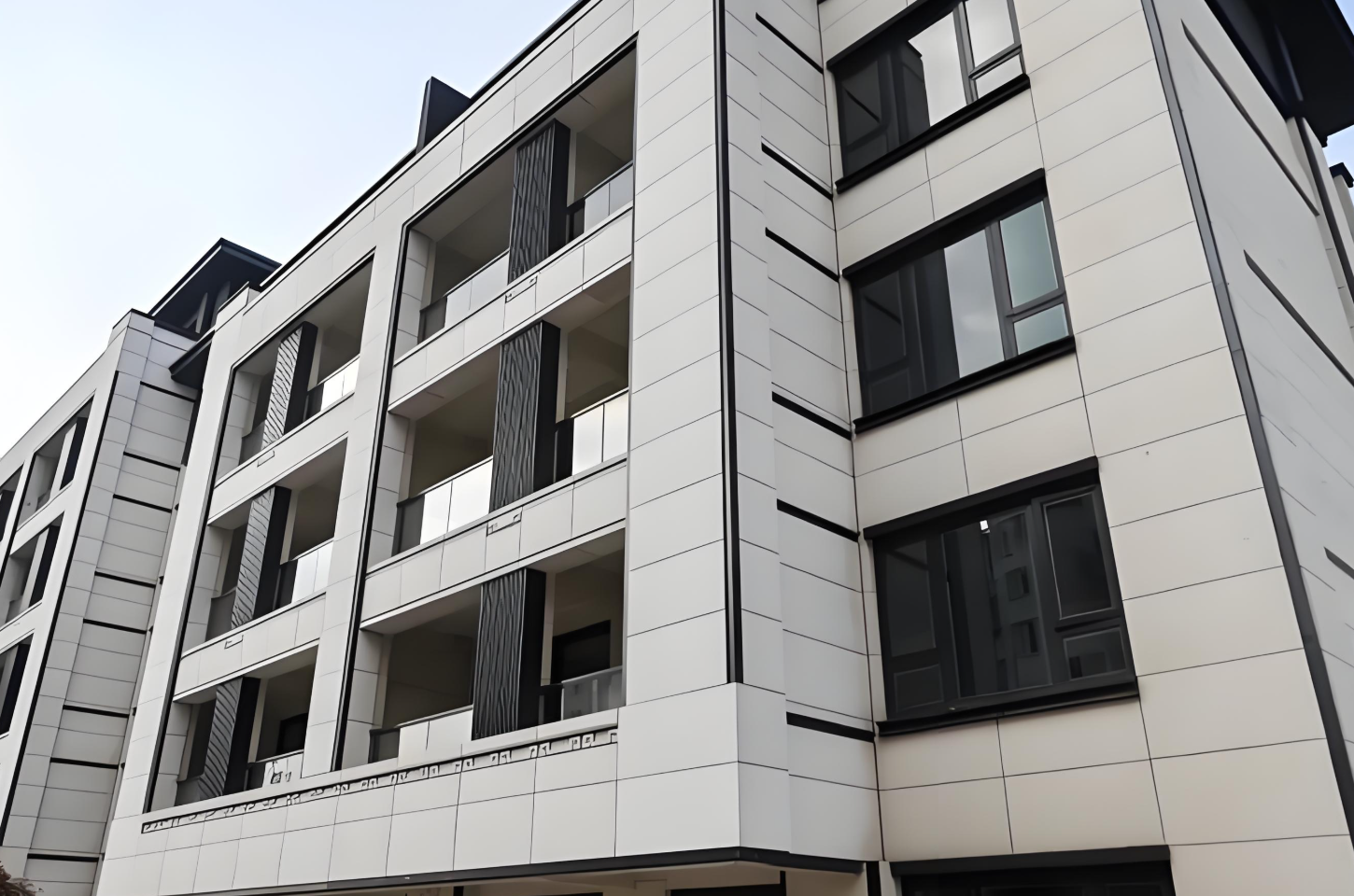Characteristics of Stone Effect Exterior Paint in Different Climate Environments
Stone effect exterior paint exhibits varying characteristics in different climate environments. In temperate climates, it boasts stable color, long lifespan, and low maintenance cost. High temperatures accelerate drying but increase fading risk, necessitating stronger UV resistance. Low temperatures slow drying and require enhanced freeze-thaw resistance. Frequent rainfall demands superior water resistance and anti-pollution ability. Strong UV environments call for high weather and UV resistance. Plateau climates require outstanding UV resistance, freeze-thaw resistance, and wind and sand resistance.

1. Temperate Climate Environment
- Stable Color and Texture: In a temperate climate, stone effect paint can maintain its vibrant color and texture for a long time, without fading or changes in texture.
- Long Lifespan: The relatively mild climate has less erosive impact on stone effect paint, resulting in a longer lifespan, which can generally reach over 20 years.
- Friendly Construction Conditions: Construction is less affected by the climate, with moderate drying speed, which is conducive to ensuring construction quality and a stable construction period.
- Low Maintenance Cost: Due to the minimal environmental damage to the stone effect paint, the maintenance cost is relatively low.
2. High Temperature Environment
- Fast Drying Speed: High temperatures accelerate the drying speed of stone effect paint. However, if the temperature is too high, it may lead to a decrease in coating adhesion, affecting construction quality.
- Increased Fading Risk: Long-term exposure to high temperatures, especially in regions with strong ultraviolet rays in the south, can cause the natural sand in stone effect paint to fade. The color may become noticeably lighter after 5-6 years.
- High Ultraviolet Resistance Requirement: It is necessary to have stronger ultraviolet resistance to withstand the intense sunlight and prevent coating aging.
- Increased Construction Difficulty: Construction in high temperatures requires special attention to the drying speed and adhesion of the coating, and the construction process may need to be adjusted.
3. Low Temperature Environment
- Slow Drying: Low temperatures slow down the drying speed of stone effect paint, which may extend the construction period.
- Important Freeze-thaw Resistance: In low-temperature environments, stone effect paint needs to have good freeze-thaw resistance to prevent coating cracking due to temperature changes.
- Enhanced Adhesion: High-quality stone effect paint can still maintain strong adhesion in low temperatures, ensuring the coating is firmly attached.
- Restricted Construction Conditions: Construction in low-temperature environments requires special attention to temperature control, and insulation measures may need to be taken.
4. Frequent Rainfall Environment
- Key Water Resistance: In regions with frequent rainfall, the water resistance of stone effect paint is crucial. It can effectively prevent rainwater penetration and protect the wall from moisture.
- Extended Drying Time: Rainfall increases air humidity, which in turn extends the drying time of stone effect paint. Construction should be carefully timed.
- Anti-pollution Ability Tested: Rainwater may carry dust and pollutants from the air to the wall surface, so the anti-pollution ability of stone effect paint is tested.
- Reduced Coating Durability: Frequent rainfall may reduce the durability of the coating, which requires regular inspection and maintenance.
5. Strong Ultraviolet Environment
- High Weather Resistance Requirement: Strong ultraviolet rays accelerate the aging of stone effect paint, causing it to fade, peel, or crack. Therefore, it needs to have excellent weather resistance.
- Poor Color Stability: Long-term exposure to strong ultraviolet rays affects the color stability of stone effect paint, making it prone to color differences.
- Accelerated Coating Aging: Ultraviolet radiation accelerates the aging of the coating, shortening its lifespan.
- Post-construction Protection Measures: After construction, additional protective measures, such as applying an ultraviolet-resistant protective layer, need to be taken.
6. Plateau Climate Environment
- Outstanding Ultraviolet Resistance: In plateau areas with high ultraviolet intensity, stone effect paint must have excellent ultraviolet resistance to maintain its color for a long time without fading.
- Strong Freeze-thaw Resistance: The large diurnal temperature difference requires stone effect paint to have good freeze-thaw resistance to adapt to significant temperature changes.
- Wind and Sand Resistance: Plateau areas often have strong winds and sand, so stone effect paint should have a certain ability to resist wind and sand erosion to keep the wall clean and beautiful.
- High Construction Difficulty: The complex climate conditions in plateau areas make construction more difficult, and special attention needs to be paid to construction techniques and material selection.
Comparison Table of Characteristics
| Climate Environment | Drying Speed | Color Stability | Weather Resistance | Freeze-thaw Resistance | Ultraviolet Resistance | Wind and Sand Resistance | Construction Difficulty | Maintenance Cost |
|---|---|---|---|---|---|---|---|---|
| Temperate Climate | Moderate | High | High | Medium | Medium | Medium | Low | Low |
| High Temperature | Fast | Low | Medium | Medium | High | Medium | Medium | Medium |
| Low Temperature | Slow | Medium | Medium | High | Medium | Medium | Medium | Medium |
| Frequent Rainfall | Slow | Medium | Medium | Medium | Medium | Medium | Medium | Medium |
| Strong Ultraviolet | Medium | Low | Low | Medium | High | Medium | Medium | High |
| Plateau Climate | Medium | Low | Medium | High | High | High | High | High |
Detailed Explanation
- Drying Speed: Indicates the drying speed of stone effect paint in different climate environments. Both too fast and too slow drying speeds can affect construction quality.
- Color Stability: Refers to the ability of stone effect paint to maintain its original color in different climate environments. Poor color stability can lead to fading or color differences.
- Weather Resistance: Refers to the ability of stone effect paint to resist aging, peeling, and other phenomena in different climate environments. Poor weather resistance can shorten the lifespan.
- Freeze-thaw Resistance: Refers to the ability of stone effect paint to resist freeze-thaw cycles in low-temperature environments. Poor freeze-thaw resistance can lead to coating cracking.
- Ultraviolet Resistance: Refers to the ability of stone effect paint to resist ultraviolet radiation in strong ultraviolet environments. Poor ultraviolet resistance can lead to coating aging.
- Wind and Sand Resistance: Refers to the ability of stone effect paint to resist wind and sand erosion in areas with strong winds and sand. Poor wind and sand resistance can lead to wall pollution.
- Construction Difficulty: Refers to the difficulty of construction in different climate environments. High construction difficulty may require additional construction measures.
- Maintenance Cost: Refers to the maintenance cost required to maintain the appearance and performance of stone effect paint in different climate environments. High maintenance cost can increase the burden of use.
